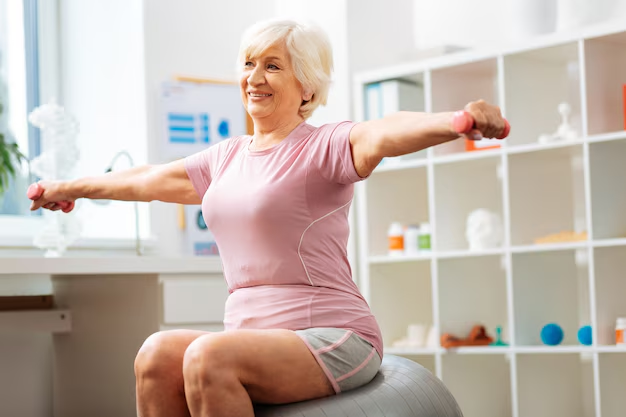Discover the Best Exercises for Osteoporosis Management
Osteoporosis, often dubbed the "silent disease," weakens bones, making them susceptible to unexpected fractures. This condition predominantly affects older adults, particularly postmenopausal women, but the right exercise routine can play a pivotal role in managing and mitigating the risks. Knowing what exercises can bolster bone health can empower those at risk or living with osteoporosis to lead a robust and active life.
The Power of Weight-Bearing Exercises
Weight-bearing exercises are activities where you move against gravity while staying upright. They are particularly beneficial for strengthening bones because they promote the formation of new bone tissue. Some excellent weight-bearing exercises include:
- Walking: A simple yet effective way to improve bone density. Aim for a brisk 30-minute walk most days of the week.
- Jogging or Running: For those who can handle higher impact, jogging or running provides greater bone-strengthening benefits.
- Dancing: Not only fun but also great for improving balance and bone strength.
- Hiking: Especially effective when done on uneven ground, which challenges your bones and muscles.
Strength Training: Building Muscle for Bone Health
Strength training involves working against resistance to build muscle strength, which in turn supports your bones. Key strength training exercises include:
- Lifting Weights: Incorporate exercises targeting all major muscle groups at least twice a week.
- Resistance Band Exercises: These are gentler on the joints, making them suitable for all fitness levels.
- Body-Weight Exercises: Push-ups, squats, and lunges can significantly contribute to muscle and bone strength.
Versatility of Flexibility and Balance Exercises
While not directly increasing bone density, maintaining flexibility and balance reduces the risk of falls—therefore minimizing fracture risks. Consider these activities:
- Tai Chi: This mind-body practice improves balance, flexibility, and overall strength.
- Yoga: Helps in enhancing flexibility and balance, strengthening bones, and reducing stress.
- Pilates: Effective for core strength, balance, and muscle endurance.
Safety First: Exercising with Osteoporosis
If you have osteoporosis, it's crucial to stay safe while exercising by considering the following:
- Consult Your Doctor: Before starting any new exercise regimen, especially if you're at high risk for fractures.
- Start Slowly: Gradually increase the intensity to avoid injuries.
- Focus on Form: Proper technique is crucial, particularly with strength training, to protect your bones and prevent injury.
With these exercises, individuals battling osteoporosis can significantly improve their quality of life. For those seeking to take charge of their health, adopting a balanced exercise routine is naturally intertwined with other areas of empowerment, such as accessing financial assistance programs that can help manage healthcare and living expenses.
Empower Your Well-being: Financial and Educational Resources 📚💸
- Medicare & Medicaid: Government programs providing healthcare assistance for eligible seniors and low-income individuals.
- Supplemental Security Income (SSI): Offers financial support to meet basic needs like food and shelter for those with limited income.
- Senior Exercise Classes: Many community centers and local gyms offer free or discounted classes.
- Educational Grants: Institutions offer grants to study health and wellness, enabling a deeper understanding of osteoporosis management.
Embrace these resources and exercises to foster a healthier, financially secure lifestyle while navigating osteoporosis with confidence.

Related Topics
- a Nurse Is Caring For a Client Who Has Osteoporosis.
- a Percutaneous Is Performed To Treat Osteoporosis Related Compression Fractures
- Can Alcohol Cause Osteoporosis
- Can I Do Pilates If I Have Osteoporosis
- Can I Reverse Osteoporosis
- Can Men Get Osteoporosis
- Can Osteoporosis Affect Teeth
- Can Osteoporosis Be Cured
- Can Osteoporosis Be Painful
- Can Osteoporosis Be Reversed